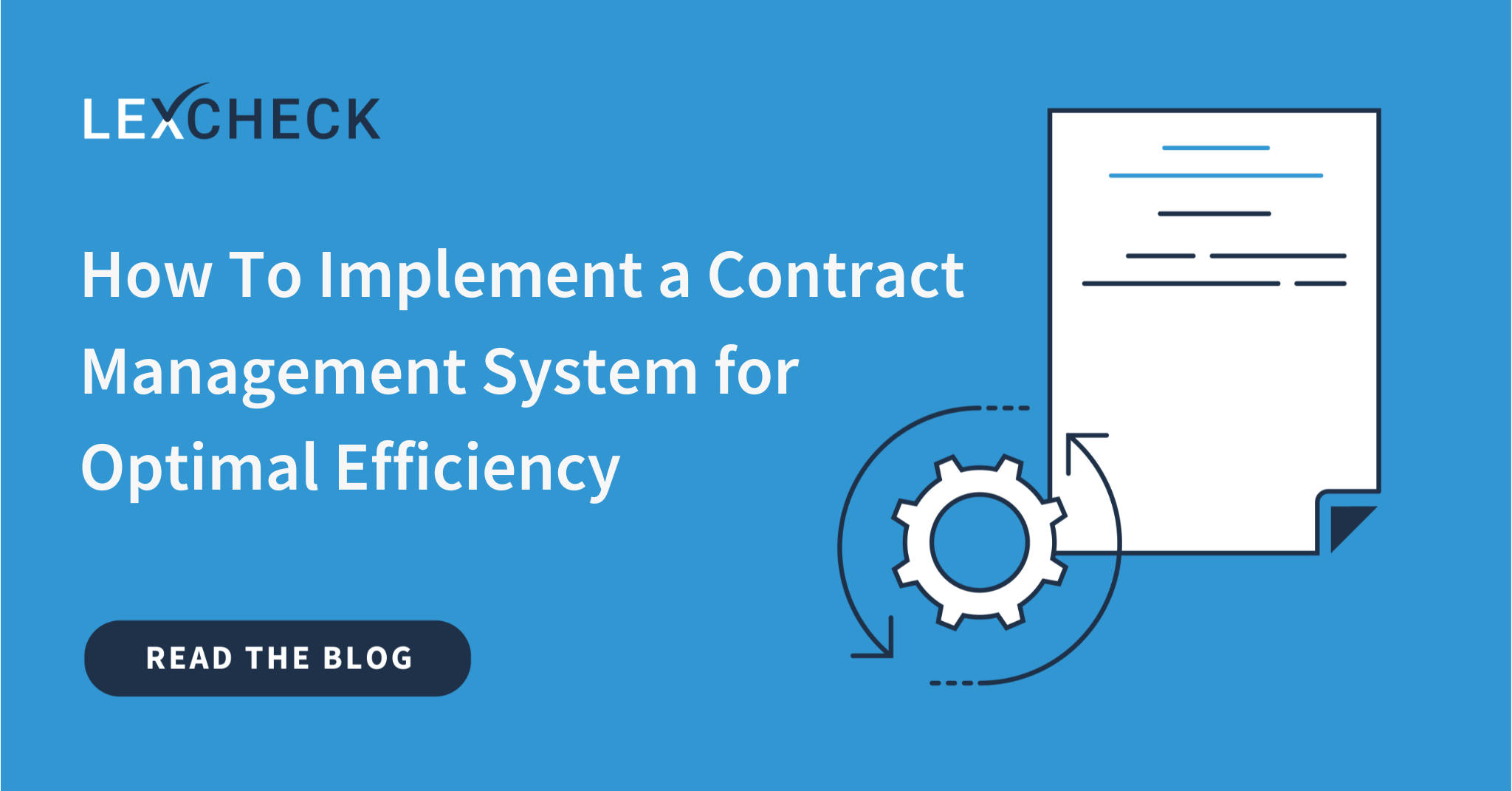Legal professionals face increasing pressure as the rapid pace of technological change, the increasing complexity of compliance, and talent shortages ensue. According to the 2022 Wolters Kluwer Future Ready Lawyer Survey, ninety-one percent of corporate legal departments expect to fully leverage technology to tackle these challenges head on. The survey also found that sixty-three percent of technology-leading law firms increased profits over the past year, compared to forty-six percent for lagging firms.
For many legal teams, introducing technology begins with a contract management system (CMS). Contracts are the lifeblood of corporate legal departments, so managers are constantly looking for ways to not only gain visibility into the entire contract lifecycle, but also streamline mundane, manual contracting processes. The latter is the key to freeing up employees’ time and improving outcomes.
As you may have suspected already, how to implement a contract management system is a process in itself—and one that doesn’t happen overnight. While your challenges may have needed solving yesterday and your legal teams might be eager to hit the ground running, patience and planning during implementation always pays off. Here’s what you need to know to get started.

Steps for Successful CMS Implementation
Contract management system implementation typically takes two to four years for a full roll out. A step-by-step process for successful execution is outlined below:
Step 1: Come up with a plan and align shareholders
The first step involves informal discussions to assess the company’s needs and analyze which CMS solutions might fit the bill. Shareholders get together and sign off on the final SaaS agreement, then develop a plan for rollout that includes training for all necessary staff. Essential questions to ask before the rollout include: Who oversees the CMS implementation? Who needs onboarding and in what order? What’s the expected timeframe for complete adoption? And what’s the contingency plan if the expected results are not achieved?
Step 2: Train staff and provide ongoing support
Meetings are regularly scheduled for onsite coaching and training. Staff is shown how to amend their daily processes to seamlessly accommodate CMS activities and evaluated by management to determine where additional support or resources may be needed. Virtual coaching is often provided to ensure staff consistently applies best practices and the full range of tools to their work. Enablement and training teams are the linchpins of successful adoption as they facilitate communications, maintain training documents, and create a continuous feedback loop to make sure teams are utilizing the technology correctly and within the context of their individual roles.
Step 3: Monitor and refine the data system
As CMS integrates with the workflow, management will need to see that implementation and business goals are met. “Success” may be defined as the speed at which contracts are processed and approved, or how much additional business (and revenue) the company can take on. Reducing employee turnover, obviating errors, or decreasing escalations to high-level lawyers may be additional metrics worth considering if you’re looking to boost efficiency. Quarterly progress monitoring and data assessment will help teams refine the system and improve efficiency metrics.
Step 4: Add support options and remedy bottlenecks
Once CMS is up and running, automation can be inserted into any part of the process to reduce manual labor and produce better outcomes. From draft templates to review software and analytics solutions, various contract lifecycle tools can complement your CMS platform with the latest technology. Make sure you choose solutions that offer seamless integration; doing so ensures that all systems will continue talking to one another and keep workflows on track.
AI-Powered Automation Software Eases CMS Adoption
CMS software offers a more accessible data storage center compared to physical filing cabinets or unsearchable legacy systems. While it’s easy to locate specific terms or contracts with the former, a tremendous amount of manual labor is still necessary to review and negotiate these contracts.
By adding LexCheck’s artificial intelligence (AI) software to the mix, legal teams can automate pre-execution contract review work and train systems to apply pre-programmed logic to every draft. For example, a lawyer can quickly update a delivery date on a renewal contract by configuring the LexCheck system to accommodate the change. Or they might stipulate that agreements be escalated to a subject matter expert if anti-boycott language is present.. Contracts can be automatically compared to the company’s corporate legal playbook, boilerplate language, and standard inclusions to further ensure compliance.
LexCheck offers tenfold ROI compared to solely implementing CMS software, but the benefits don’t stop there. Corporate legal departments are finding that LexCheck also:
- Improves efficiency by reducing approval times by 80%
- Frees up work hours by decreasing escalations to senior legal by 70%
- Leads to better outcomes by cutting contract processing costs by 10-30%
- Satisfies clients by allowing for better customer service and advisory activities
Harness the Power of LexCheck for True CMS Efficiency
After learning how to implement a contract management system, the increase in efficiency often leads many legal departments to consider one of their biggest bottlenecks: contract review. Waiting weeks for multiple parties to proofread an agreement is simply unacceptable in today’s extremely competitive business climate.
That’s why LexCheck can seamlessly integrate with your existing CMS software to automate pre-execution contract review. Instead of a junior associate spending weeks reading through a contract, LexCheck takes the first pass—looking for errors, vague language, omissions, and deviations from the corporate legal playbook. When necessary, contextual notes are included to guide revisions, assess risk, or strengthen negotiating positions. Changes can then be made with the click of a button.
Learning how to implement a contract management system is a great leap toward efficiency. But with automated support at key stages in the process, your legal team can truly be unstoppable.

